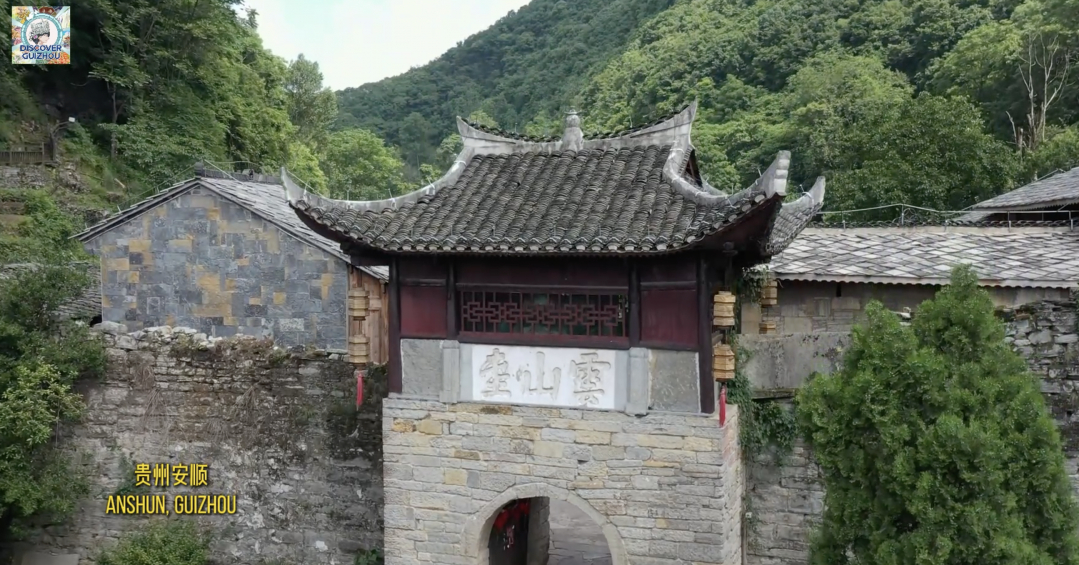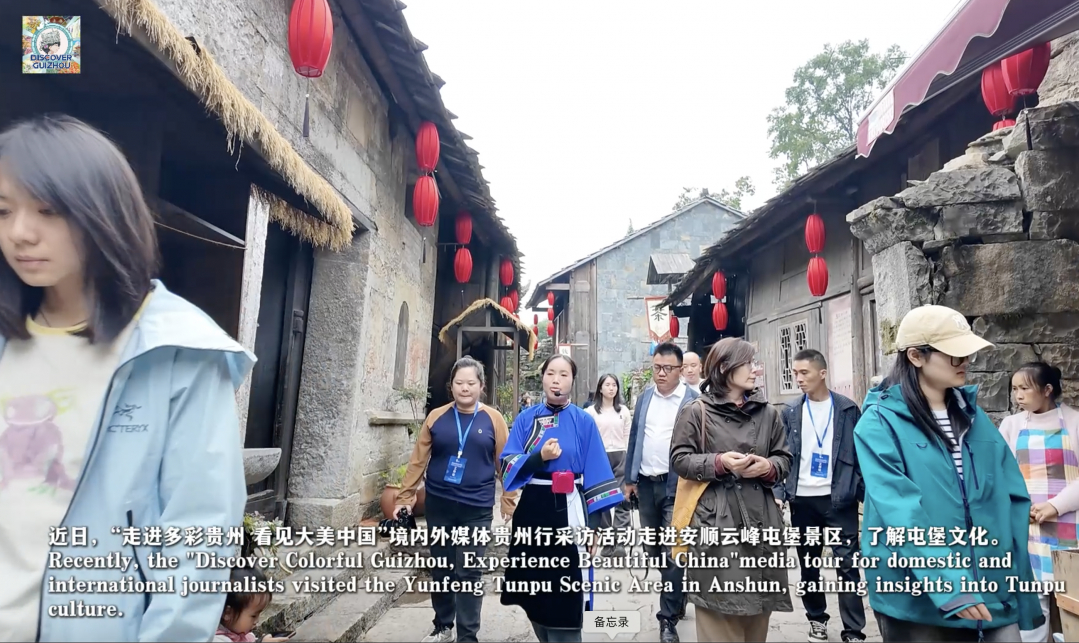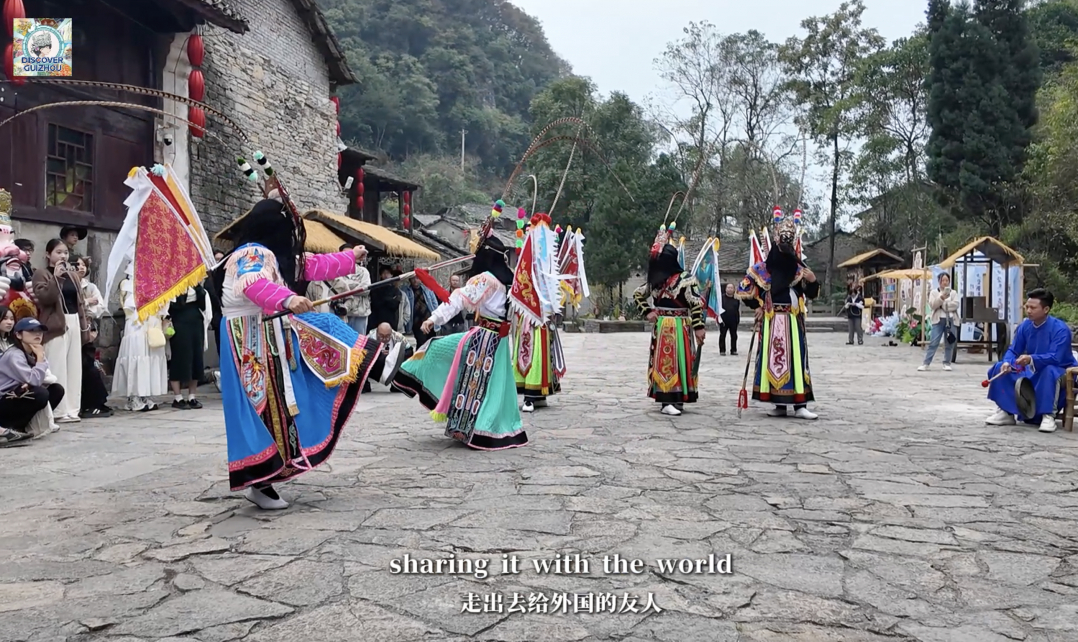近日,由中国记协、贵州省委宣传部组织开展的“走进多彩贵州 看见大美中国”境内外媒体贵州行采访活动走进安顺云峰屯堡景区,了解屯堡文化。
Recently, the "Discover Colorful Guizhou, Experience Beautiful China" media tour for domestic and international journalists, organized by the All-China Journalists Association and the Publicity Department of the CPC Guizhou Provincial Committee, visited the Yunfeng Tunpu Scenic Area in Anshun to learn about Tunpu culture.

屯堡文化是贵州独具特色的活态地域文化,安顺是屯堡文化集中地。云峰屯堡景区位于安顺市区以南18公里处,由云山屯、本寨等八个屯堡村寨组成。屯堡是明代“调北征南”和“调北填南”在安顺一带的汉族军民后代,经过600年的传承、演变而形成的历史文化遗存,被学者誉为“冷兵器时代的最后堡垒”。
Tunpu culture is a unique, living regional heritage in Guizhou, with Anshun as its cultural center. The Yunfeng Tunpu Scenic Area, located 18 kilometers south of Anshun’s city center, consists of eight fortified villages, including Yunshantun and Benzhai. Tunpu culture traces back to the descendants of Han soldiers and civilians who settled in the Anshun area during the Ming Dynasty’s “mobilization from the north to stabilize the south.” Over 600 years of inheritance and evolution have transformed these settlements into a historical and cultural legacy, with scholars describing them as “the last fortress of the cold weapon era.”
由于较完整地保存了明清古建筑和人文生态,云山屯和本寨在2001年被列为全国重点文物保护单位,2005年被授予“中国历史文化名村”称号。
Thanks to the well-preserved Ming and Qing architecture and cultural ecology, Yunshantun and Benzhai were designated as National Key Cultural Relics Protection Units in 2001 and awarded the title of "Chinese Historic and Cultural Village" in 2005.

漫步在青山环抱、绿水环绕的本寨村,石瓦、石墙、石巷、石井、石板路……每一步都让人仿佛置身于隐秘的“石头王国”。本寨屯堡始建于明洪武二年(公元1369年),是中国至今保存最完整的明初文化村落,以三合院和四合院相套而成,建筑集中成团,用石头砌墙,建有碉楼,是明代军屯、商屯遗存的实物见证和屯堡文化的典型代表。
Strolling through Benzhai Village, nestled among lush mountains and flowing waters, visitors encounter stone-tiled roofs, stone walls, stone alleys, stone wells, and stone-paved roads, all creating an immersive “stone kingdom.” Benzhai Tunpu, established in the second year of the Hongwu Emperor’s reign in the Ming Dynasty (1369 AD), remains China’s best-preserved cultural village from the early Ming era. Its layout includes courtyard homes arranged in a clustered manner, with stone-walled defenses, watchtowers, and structures that stand as tangible remnants of military and commercial garrison culture, embodying Tunpu’s heritage.
云山屯古建筑群,是明代军屯村寨,虽几经战乱烟火和自然侵蚀,寨内的屯墙、街巷、宅院以及自然生态环境保存完整,犹如一部古代屯田文化的百科全书。“看到石头寨墙上的炮眼和垛口,仿佛能想象到这里当年金戈铁马、保卫家园的场面。”中国日报记者刘伯千感慨。
The ancient architecture of Yunshantun, a Ming-era military garrison village, has survived the ravages of war and nature over centuries. Its fortified walls, streets, courtyards, and natural surroundings are preserved intact, resembling an encyclopedia of ancient military farming culture. "Seeing the cannon holes and crenels on the stone walls, it’s as if one can imagine the scenes of fierce battles fought here to protect the homeland," remarked Liu Boqian, a reporter from China Daily.

如今,屯堡人的建筑、服饰、饮食、习俗、娱乐方式等仍保留着大明遗风,独具魅力。走进屯堡,如同走进遥远的年代,让记者们留连忘返。
Today, the architecture, clothing, cuisine, customs, and entertainment of the Tunpu people still carry the charm of the Ming Dynasty. Stepping into Tunpu is like stepping back in time, a place that journalists found hard to leave.
“600年前的遗存,至今依然保存完整,我感到很震撼。”瑞典《北欧时报》副主编赵娟表示,作为海外华人媒体,我们希望将中国悠久的历史文化宣传出去,让外国友人看到、了解,走进中国,走进贵州。
"The fact that relics from 600 years ago are still so well-preserved is truly astounding," said Zhao Juan, Deputy Editor-in-Chief of the Nordic Times of Sweden. "As overseas Chinese media, we hope to promote China’s rich history and culture, allowing foreign friends to see, understand, and experience China and Guizhou."

现场,记者们还品尝了糍粑、大碗茶,观看了被誉为戏剧“活化石”的安顺地戏。锣鼓声响,演员们头顶面具,面罩青纱,背插战旗,手持兵器,在铿锵的锣鼓伴奏中相互唱、舞、打,将一台精彩的《三英战吕布》展现给观众。
At the site, journalists tasted traditional glutinous rice cakes, enjoyed large bowls of tea, and watched the Anshun Dixi opera, praised as a "living fossil" of Chinese theater. With drums sounding, actors donned wooden masks, covered their faces with gauze, and wore battle flags on their backs while holding weapons, singing, dancing, and acting out a thrilling rendition of The Three Heroes Battle Lü Buto the audience.
“对地戏深感震撼,演员一招一式有很深的功底。我对地戏面具非常感兴趣,它与其他剧种的面具有很大差别,非常值得推荐!”人民日报记者孙志颐说。
“Watching the Dixi opera was impressive; every move the actors made displayed profound skill,” commented Sun Zhiyi, a journalist from the People’s Daily. “I’m especially fascinated by the Dixi masks—they’re quite different from masks in other operatic forms and are absolutely worth recommending.”
贵州日报天眼新闻记者 王旗